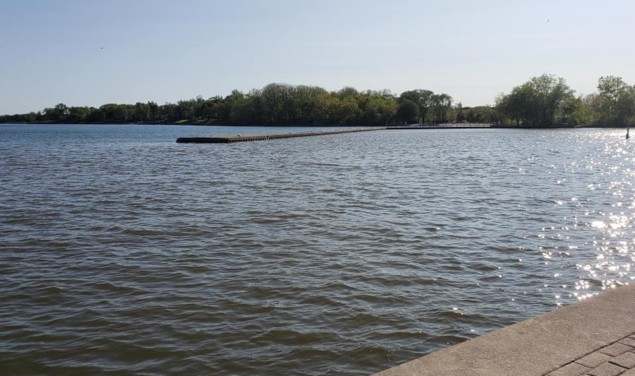
Do you know the feeling you get when you see something familiar in unfamiliar circumstances? That is how I felt when I first saw the above photo of the west pier at Bronte Harbour on Lake Ontario – one of the Great Lakes of North America.
I spent a good deal of time in the late 1970s and early 1980s fishing off the end of that pier, and back then there was at least a metre drop from the top of the pier to the water. Now, the pier could easily be inundated by a small wave.
The Canadian harbour lies about 45 km south-west of downtown Toronto and the photo comes courtesy of resident Neil Olmstead. When I cast my line for salmon and trout in 1979, the level of the lake was about 74.8 m above sea level, which I believe is a bit below the long-term average. Today it is at a record breaking 76.0 m, shattering the previous record of 75.8 m, which was set in 2017.
Empire state of emergency
Most of the picturesque village of Bronte sits well above its harbour, so is unlikely to be significantly affected by the high water. So, if you are in the area, please don’t hesitate to stop for an ice cream and a stroll along the east pier. The situation is more serious elsewhere on the lake and on the US side, the governor of New York has declared a state of emergency. The video below shows flooding near Rochester, New York.
Water levels in Lake Ontario are far from static and undergo significant annual fluctuations of about 0.6 m. The level plunges in the winter as the drainage basin freezes and then rises rapidly in the spring and early summer as snowmelt and rainwater enter the lake. But unlike the other Great Lakes, its long-term level is normally fairly constant because it is controlled by a huge dam on the St Lawrence River.
So why not just let out more water? This dam is currently the focus of a dilemma involving people living upstream on the lake and downstream along the river in Montreal – which has been inundated with water flowing into the St Lawrence from a flooding Ottawa River. Because Lake Ontario is so large, reducing water levels by just a few centimetres would have a significant impact downstream in Montreal.
And it is not just Lake Ontario, the other Great Lakes are also full to the brim. But lovers of the Great Lakes (what’s not to love) will know that less than a decade ago there was growing concern that water levels were becoming too low.
So, what has changed and why have water levels fluctuated so wildly in less than 10 years? Drew Gronewold and Richard Rood of the University of Michigan argue that climate change has disrupted the balance between evaporation and precipitation in the Great Lakes region. You can read more in “Climate change is driving rapid shifts between high and low water levels on the Great Lakes”.



